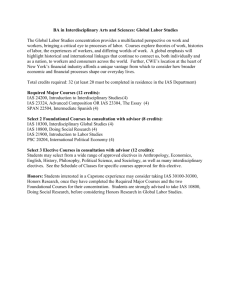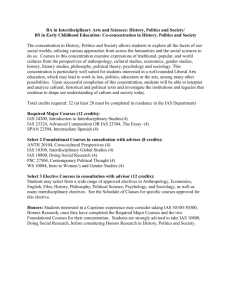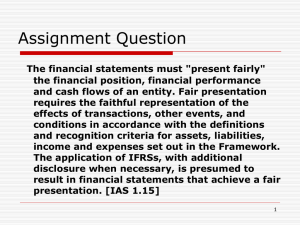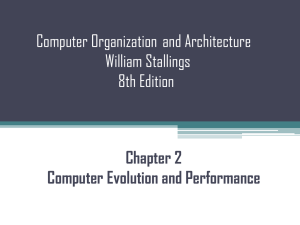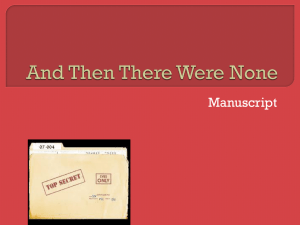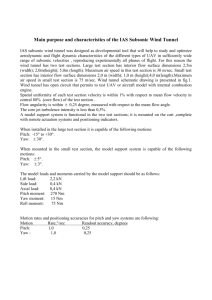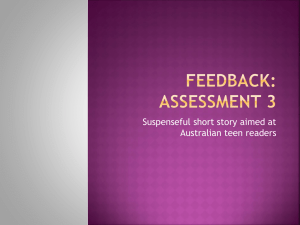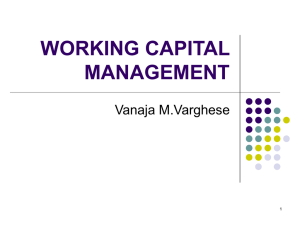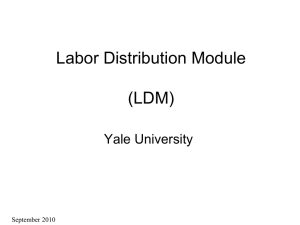Document
advertisement
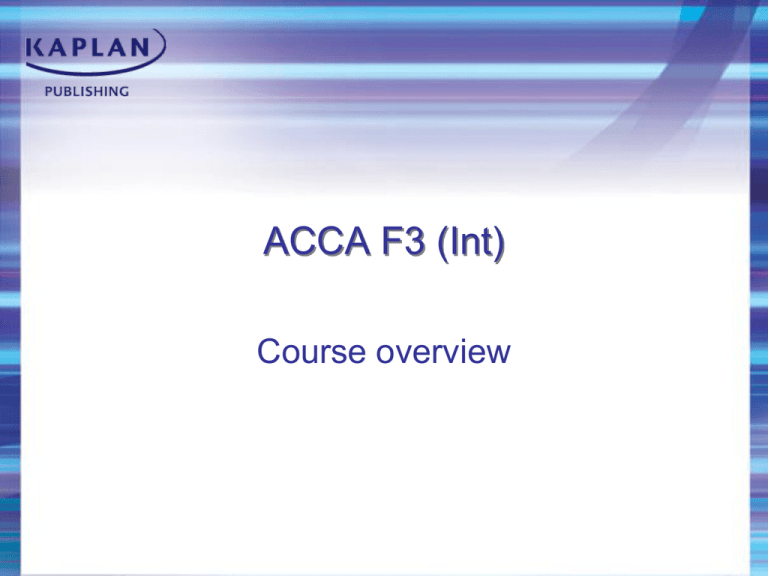
ACCA F3 (Int) Course overview Chapter 1 INTRODUCTION TO ACCOUNTING Types of business entity • Sole trader • Partnership • Company Accounting consists of 2 elements: 1. Recording 2. Summarising - Income statement - Statement of financial position Users of financial statements Chapter 2 STATEMENT OF FINANCIAL POSITION & INCOME STATEMENT INCOME STATEMENT $ Sales $ X Cos Opening inventory X Purchases X Closing inventory (X) (X) Gross profit X Less expenses: Rent & rates (X) Heat & light (X) Wages (X) (X) Net profit X STATEMENT OF FINANCIAL POSITION $ $ Non-current assets Intangible X PPE X X Current assets Inventory X Receivables X Bank X X X Equity Capital X Profit X Less drawings (X) Non-current liabilities Bank loan X Current Liabilities X Payables X X X Chapter 3 DOUBLE ENTRY BOOKKEEPING Duality concept • Every transaction has at least 2 effects on the financial statements. • Captured in ledger accounts. Double entry ledger accounts Debit Electricity Date Details 1 Jan Bank Debit Date $ Date Credit Details 500 Bank Details $ $ Date 1 Jan Credit Details Electricity $ 500 Chapter 4 INVENTORY IAS 2 INVENTORY Chapter 5 SALES TAX Chapter 6 ACCRUALS & PREPAYMENTS Accruals concept Income & expenditure should be accounted for in the period in which it relates not when cash is received or paid. Accruals Expenses charged against profits for the period even though they have not yet been paid for. Prepayments Payments made in one period but charged against profits in a later period to which they relate. Chapter 7 IRRECOVERABLE DEBTS & ALLOWANCE FOR RECEIVABLES Irrecoverable debts An irrecoverable debt should be written off to the income statement in accordance with the prudence concept. Allowance for receivables • Where the recoverability of a receivable is uncertain an allowance may be set up to reflect this in accordance with prudence. • The allowance will offset the receivables balance in the statement of financial position. Chapter 8 NON-CURRENT ASSETS Chapter 9 FROM TB TO FINANCIAL STATEMENTS Chapter 10 BOOKS OF PRIME ENTRY & CONTROL ACCOUNTS • A book of prime entry is used to capture data as it arises. • Totals transferred to: - Ledger accounts - Individual accounts Chapter 11 CONTROL ACCOUNT RECONCILIATIONS Control Accounts • A control account is used to represent the total of a similar asset or liability e.g. payables. • Individual accounts are also maintained. • A reconciliation between the control account and the individual accounts helps to detect errors. Chapter 12 BANK RECONCILIATIONS Bank Reconciliations Bank reconciliations are required to explain differences between the cash book and the bank statement. Differences: • Timing differences • Errors • Omissions Chapter 13 CORRECTION OF ERRORS AND SUSPENSE ACCOUNTS Suspense Accounts • A suspense account arises from errors causing the TB not to balance. • Any balance on the suspense must be eliminated before the final accounts can be prepared. Types of errors Errors where TB still balances Errors where TB does not balance (suspense created) Error of omission Single sided entry Error of commission Debit ≠ credit Error of principle Same sided entry Error of original entry Incorrect addition of ledger Compensating errors Extraction error Reversal of entries Opening balance not brought down Transposition errors Chapter 14 APPLICATIONS OF INFORMATION TECHNOLOGY Chapter 15 INCOMPLETE RECORDS Chapter 16 PARTNERSHIPS Chapter 17 COMPANY ACCOUNTS Chapter 18 ACCOUNTING STANDARDS IAS 38 Intangible Assets An intangible asset has a value to the business but no physical form. Purchased Capitalised at cost 2 TYPES Internally Generated Capitalise if market value exists Exception: Research & Development • Research = expense • Development = Capitalise (if criteria are met). IAS 10 Events after the reporting period Events that occur between the reporting date and the date the financial statements are authorised for issue. Adjusting Events Non-Adjusting Events Provide additional evidence of conditions that existed at the reporting date. Concern conditions that did not exist at the reporting date. • Adjust the financial statements • Disclose if material IAS 37 Provisions A provision is a liability of uncertain timing or amount. Probability of occurrence Liability Asset Probable Provide* Contingent asset (Disclose) Possible Contingent liability (Disclose) Do Nothing Remote Do nothing Do nothing IAS 8 Changes in accounting policies, accounting estimates & errors Changes in accounting policies Adjust opening balance on retained earnings & restate comparative Changes in accounting estimates Change applied in current year & disclosure note if material Errors Adjust opening balance on retained earnings & restate comparative IAS 18 Revenue Recognition occurs when it is probable that future economic benefits will flow to the entity and when these benefits can be reliably measured. IAS 18 covers revenue from: • Sale of goods • Provision of services • Interest, royalties & dividends Chapter 19 STATEMENT OF CASH FLOWS Chapter 20 THE REGULATORY & CONCEPTUAL FRAMEWORK Structure of the Regulatory Framework Conceptual Framework


